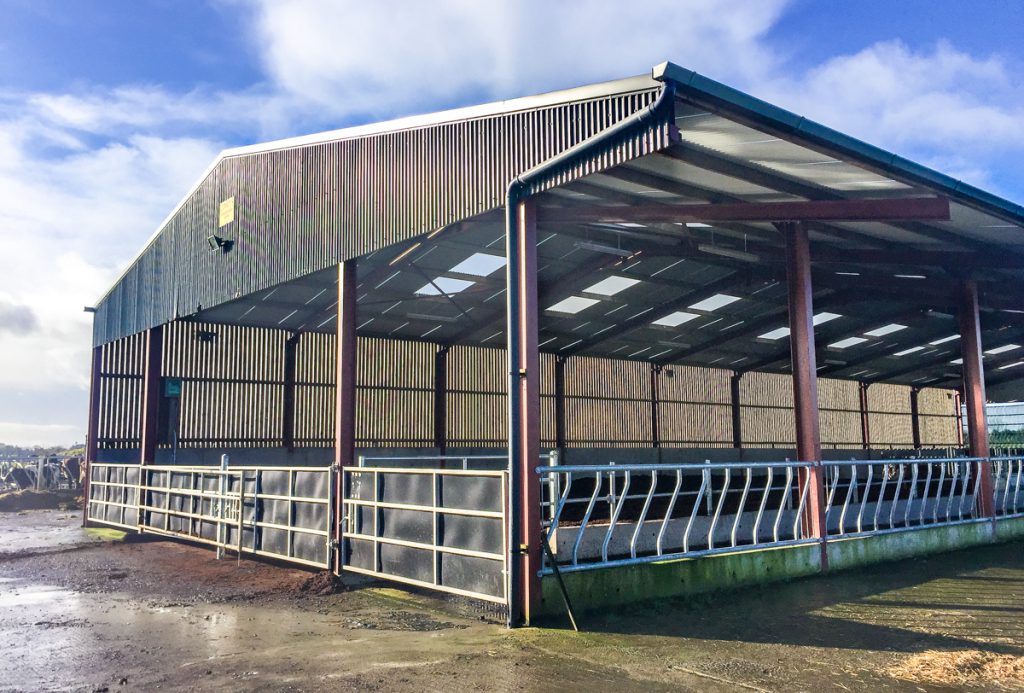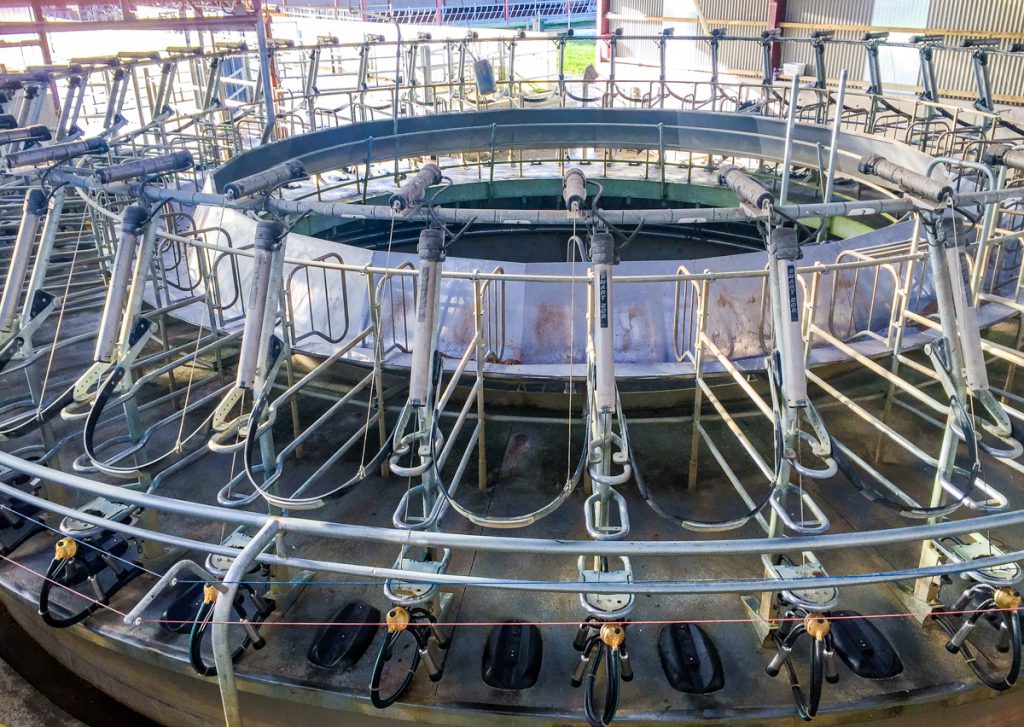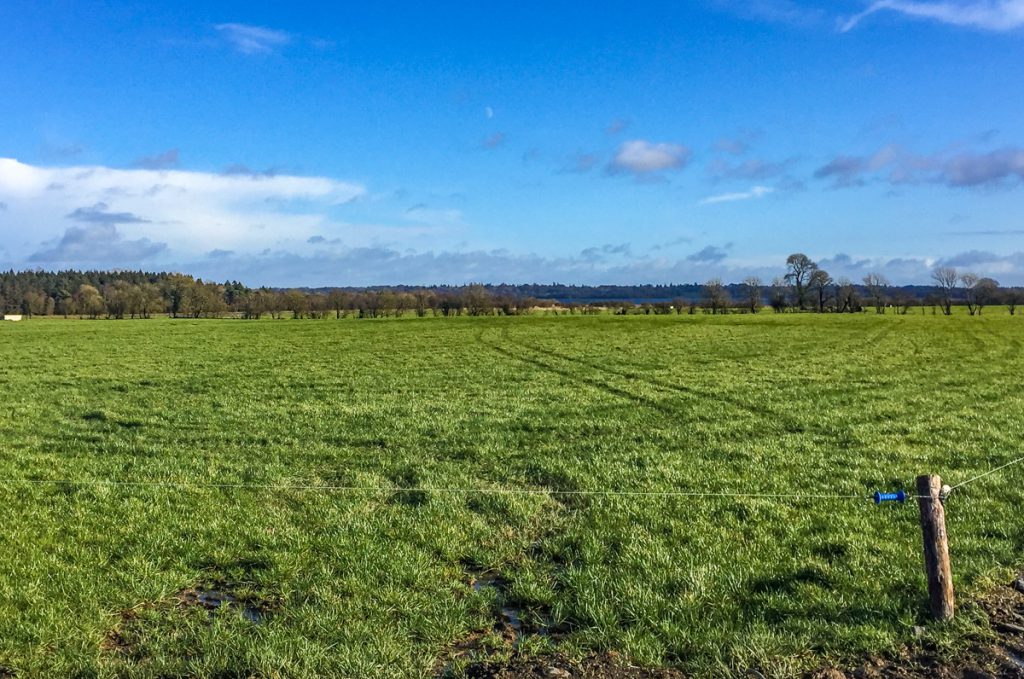Farming just outside Mullingar, Co. Westmeath, GD Young has developed a thriving enterprise of 350 dairy cows in a relatively short space of time.
Hailing from Argyll, Scotland, GD purchased the 400ac holding – which consisted of 50% stubble ground and 50% old permanent pasture – in 2015.
In the interviewing period, he has overseen a massive development, including: the construction of 350 topless cubicles; the installation of a 44-unit rotary parlour; and the development of miles upon miles of grazing infrastructure.
The route to Mullingar
Having sold the family’s farms (two farms totalling 500ac) in west Scotland, GD began looking at locations to develop a spring-calving, grass-based dairy enterprise.
We were looking for a farm for a couple of years and I was hoping to get into grass-based dairying. We were searching for a site that would take 300+ cows.
“We looked to Scotland first and bid on a couple of farms, but never got them. We weren’t that unhappy as the neighbouring towns were poor and it was my whole family – my wife Caroline and our kids Georgia, Charlotte and Fraser – that was moving.”
Having seen a farm for sale in Ireland, GD decided to make contact with the agent handling the sale. However, by the time he made contact, the farm had gone off the market.
“The agent asked me what I was looking for and he said: ‘I might have a farm, but it’s delayed with legals as the owner has just passed’.
“I never thought any more about it and we went to New Zealand on a holiday with the thoughts of emigrating their in the back of our minds.
“We loved the holiday and the country, but we decided to return back to Scotland. The currency was against us and we would have been too isolated from our family in Scotland,” GD explained.
On his return to Scotland, GD began renting back the farm the family had previously sold and had operated a high-input system. This was only a short-term stop gap, as he later went on to touch base with the Irish auctioneers once more.
“I phoned up the agent in Ireland and he told me that the farm was going to auction very quickly. We decided to come over and see it. We walked the farm on March 10 and the auction was on March 25.
“We liked the town of Mullingar and the farm ticked the most boxes of anywhere we had seen. It was a whole family move and we had a lot of criteria to hit and that’s why we ended up here.
“I spoke to a couple of co-ops who were very keen to purchase our milk, which was the opposite of Scotland where we struggled to get a buyer,” he said.
Developing a greenfield site
While farming in Argyll, GD operated a high-input system. 240-250 cows were milked in a high-rainfall area and 9,500L of milk was produced from each cow in the herd.
“We were nearly housed all summer and some of the cows would have been housed all-year round. We had a very short summer; it was completely different to the operation here.”
As it stands, GD – along with the assistant farm manager Fergal Fitzpatrick – are milking 350 crossbred cows under a grass-based system.
Calving commenced on February 1 and 87% of the cows and heifers are expected to calve within the first six weeks of the season – a far cry from the previous system operated in Scotland.
To bring the farm from its standing in 2015 to a holding that’s capable of supporting 350 cows, a large degree of construction work was required.
“Developing a greenfield site was challenging, but it was exciting,” GD noted.
“Everything was brand new. It was a new country and we had new people to deal with. But the guys undertaking the work were really good and everyone worked well together.”
As the farm is located in a geographically sensitive area, GD employed the services of planning consultant Emma Pillion to help secure permission for the necessary ground works.
“It was a considerable task as we were up against it time wise and it’s a sensitive area here. However, he had a really good team. Our architect was Patrick Murphy and Pat Gowing from Teagasc was the local dairy advisor at the time and they were excellent.
“We also had an ecologist and hydrologist on-board to get planning permission. As we had everything fairly well planned, we got through it quickly,” GD explained when asked how he managed to oversee the development in such as short space of time.
The decision to install a rotary
GD admitted that he initially wanted to install a herringbone parlour. However, after having discussions with other farmers – particularly Pat Hickey and Ciaran McDonald – he opted to install a 44-unit Waikato rotary parlour. His father George also encouraged him to install a rotary milking parlour.
“I hadn’t considered it because the price in Scotland was fairly fierce. When we came over here, I got speaking to a couple of farmers that had rotary parlours installed.
“Ciaran, particularly, said I should go for a rotary. I was going to install a herringbone parlour. But, with the numbers I was going to build, he advised me to go for the rotary. I am delighted I did to be honest and I am delighted I took his advice.”
The parlour installed on GD’s farm was the first Waikato rotary to be installed on an Irish farm. It comes equipped with ACRs (automatic cluster removers), auto-retention, automatic teat spray and a full automatic wash system.
“One man can milk in the 44-unit rotary comfortably and put 300 cows per hour through it as his ease,” GD explained.
Production
Fergal Fitzpatrick, the assistant farm manager, touched on the herd’s production. Both GD and Fergal are in the midst of the peak labour period on the farm. Calving commenced on February 1 and over 300 cows have calved thus far.
Fergal explained: “We sold 366kg of milk solids per cow to the creamery last year. But, it was a relatively young herd with 130 heifers and 200 second calvers.
That level of production was achieved with a meal input of just shy of 500kg/cow.
Despite the farm’s location, it’s a relatively dry platform and the grazing season kicks into gear in early February.
“We grew over 15t/ha of grass last year and utilisation was around 80%. Hopefully, we will pull that up to 85% this year. All of the land was reseeded with perennial ryegrass when GD started and the milking platform was stocked at 2.9 cows per hectare last year.
Fergal added that all of the silage required by the herd over the winter months is produced from the milking platform. Last year, this took the form of two pits and 550 bales of surplus grass.
“The first of the bales were made from mid-April and we were nearly taking paddocks out for bales every week.”
To ease some of the pressure on GD and Fergal, the majority of the machinery work is carried out by contractors.
Fergal’s background
Fergal is a graduate of the Teagasc Professional Diploma in Dairy Farm Management. He commenced working with GD in July 2016.
Hailing from a 70-cow farm in Co. Cavan, he had amassed a considerable amount of experience working on large-scale dairy farms throughout Ireland.
He said: “The Professional Diploma in Dairy Farm Management is an excellent platform if you are serious about dairying and you want to make a career out of it.
“It’s no harm to get away from daddy’s coat tails for a while to see something different and to learn something new. There’s always more going on than what’s happening inside your own gate and there’s more than one way of doing things,” he concluded.








